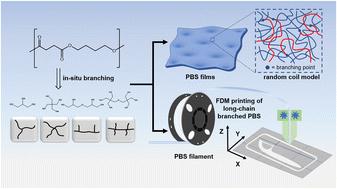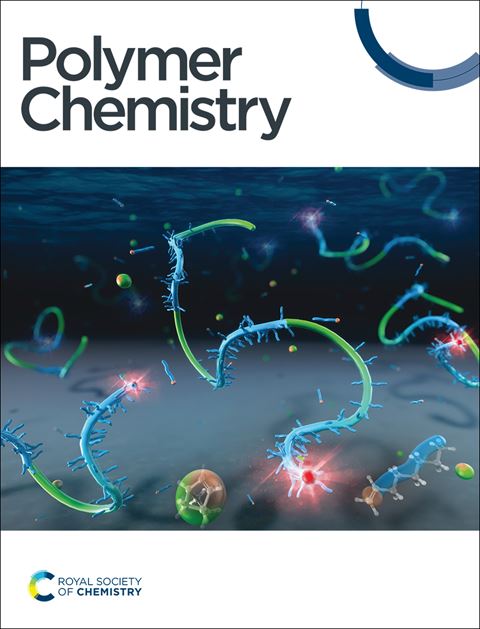Poly(butylene succinate) filaments for fused deposition modelling (FDM) 3D-printing
IF 4.1
2区 化学
Q2 POLYMER SCIENCE
引用次数: 0
Abstract
Polybutylene succinate (PBS) is an aliphatic degradable polyester prepared by melt polycondensation of succinic acid and 1,4-butanediol; the highly symmetrical molecular structure and linear polymerization monomer result in a polymer exhibiting rapid crystallization and low melt strength, limiting its fiber development and application in melt processing. In order to investigate the feasibility of using PBS as a printing consumable, in this work, a series of long-chain branched PBS filaments were synthesized by using branching agents including glycerol, diglycerol, pentaerythritol and di-pentaerythritol. The chemical structure of different branching agents significantly affects the crystallization properties of PBS polyesters. The branched structure disturbs the symmetry and regularity of the polymer and reduces the crystallization ability of the polymer. Chain topology was obtained through rheological investigations and the synthesized polymers showed a typical behavior of linear and branched PBS. The complex viscosity, storage modulus and loss modulus of long chain branched PBS at low frequency were significantly enhanced compared to those of linear PBS. To reduce the fluidity of the polymer, the melt strength of the polymer was increased by about 2.7 times. PBS filaments have been developed for the application of 3D-printing via fused deposition modeling (FDM), which provides a broader research field for PBS polymers.

求助全文
约1分钟内获得全文
求助全文
来源期刊

Polymer Chemistry
POLYMER SCIENCE-
CiteScore
8.60
自引率
8.70%
发文量
535
审稿时长
1.7 months
期刊介绍:
Polymer Chemistry welcomes submissions in all areas of polymer science that have a strong focus on macromolecular chemistry. Manuscripts may cover a broad range of fields, yet no direct application focus is required.
 求助内容:
求助内容: 应助结果提醒方式:
应助结果提醒方式:


